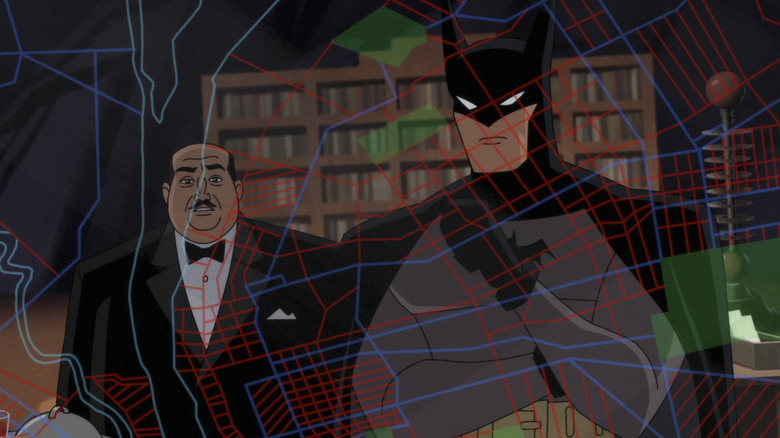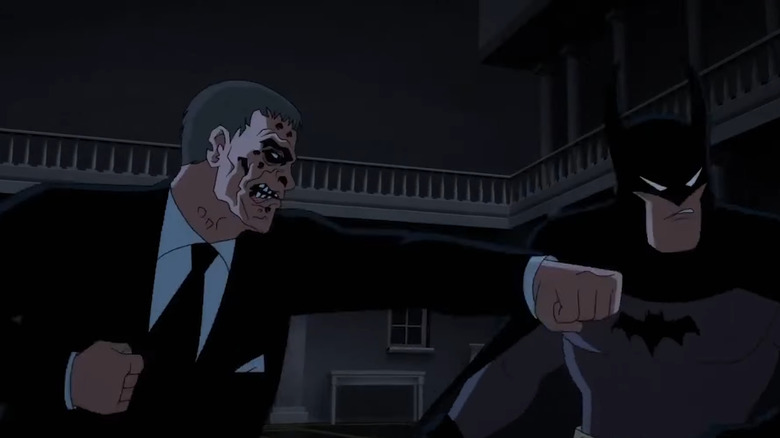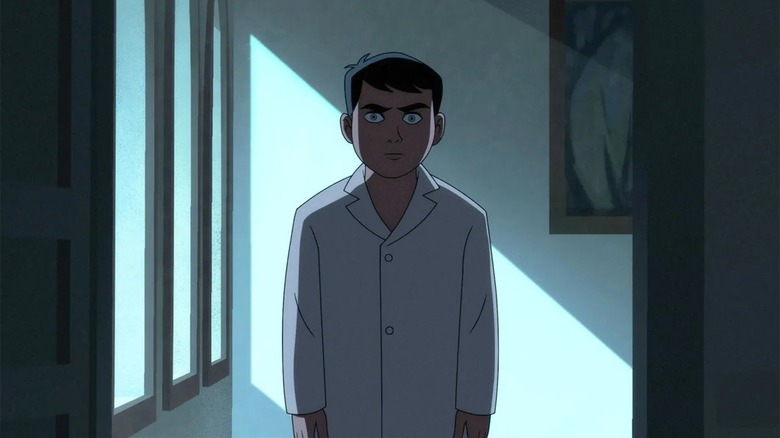The Caped Crusader Does Two Things We Rarely See In Batman Stories
This article contains spoilers for "Batman: Caped Crusader."
"Batman: Caped Crusader" had a lot to live up to, as the legacy of "Batman: The Animated Series" has loomed large over every single DC animated project for the past 30 years. Thankfully, Bruce Timm has done it again, and he has not only delivered a worthy spiritual successor to "The Animated Series," but delivered the scariest, most mature Batman story in years with "Caped Crusader."
The show has a fantastic portrayal of Gotham City and crime within its zip code, at times echoing the brilliance of "Gotham Central." It boasts exquisite animation by Studio IAM and Studio Grida, with a production design that is reminiscent of "Batman: The Animated Series" while also standing out as its own take on the Batman mythos.
More than anything else, it is a show that brings the titular Caped Crusader to places we rarely see in animation or live-action adaptations — though the comics do often tough on this. It gives us a creepy Bruce Wayne who is genuinely scary as Batman and a Batman who constantly fails. This last one makes "Batman: The Caped Crusader" something of a spiritual prequel to Matt Reeves' "The Batman," as Bruce is clearly very early in his tenure as the Dark Knight — even earlier than what we see in Reeves' movie.
Batman: Caped Crusader allows Batman to fail
No matter if it's a movie or a TV show, live-action or animated, most portrayals of Batman show him as near infallible. Whether it's a seasoned Dark Knight like Batfleck in "Batman V Superman," one in his prime like Michael Keaton in "Batman," or even one just starting out like Battinson in "The Batman" and Christian Bale in "Batman Begins," the character is simply too strong and too smart to make many mistakes. Sure, Battinson was hilariously horrible at Spanish, and he did hit himself horribly against a bridge when using his bat-wingsuit, but he was still a frighteningly strong threat to criminals.
The Batman of "Caped Crusader" is different. From the moment we first meet Bruce Wayne, he is a mess. He fails every chance he gets, perhaps most egregiously when he plays a big part in turning his best friend Harvey Dent into the supervillain Two-Face. But even before that, he is constantly getting beat up and having villains get the best of him, and he ends many of the episodes admitting that he made things worse. What's more, this Batman is an absolutely horrible person to Alfred, disrespecting him, treating him like garbage, and always calling him Pennyworth.
Something clever that Bruce Timm does in "Caped Crusader" is play into the idea that Bruce became Batman as a kid and only learned to become a human being later in life. He often slips into being Batman while amongst civilians — like when he threatens Harvey using his Batman voice, almost letting out his secret — he doesn't consider himself to have friends or anyone at all who he cares about.
Batman: Caped Crusader makes Bruce Wayne scary
Speaking of the lack of separation between Bruce and Batman, in the season's third episode we get arguably the scariest scene in a Batman title — and it doesn't involve Batman. During flashbacks of Bruce after his parents got gunned down, we see Bruce struggle to sleep due to the trauma of his parents' murder. In the middle of the night, the young kid approaches Alfred, the closest thing he has to family now. Bruce stands by his butler's open door completely still and surrounded by darkness, awakening Alfred after saying, "They're going to pay." When Alfred asks who, Bruce replies, "All of them. I'm going to make them pay. And you're going to help me."
These are not the actions of a young boy who comes to rely on his butler as a friend and confidant but rather the Batman equivalent of Eren Yeager declaring he will eradicate all mankind in "Attack on Titan." He is essentially holding Alfred hostage, forcing him to do Bruce's bidding for the rest of his life whether he agrees with his methods or not. The scene is not only the scariest Bruce Wayne has ever been, but it hits at the heart of "Caped Crusader," showing that Bruce Wayne died alongside his parents, and what came home from Crime Alley was Batman, a monster dedicated to fighting other monsters.
The horror inspirations of "Caped Crusader" don't stop there. There's Clayface clearly being modeled after Boris Karloff, and the cartoon also brings some rare supernatural elements we don't often see in Batman adaptations. Unlike "The Animated Series," they are not explained away with science, but straight up taken as supernatural, from ghosts to vampires. This is a new Batman for a new era.


